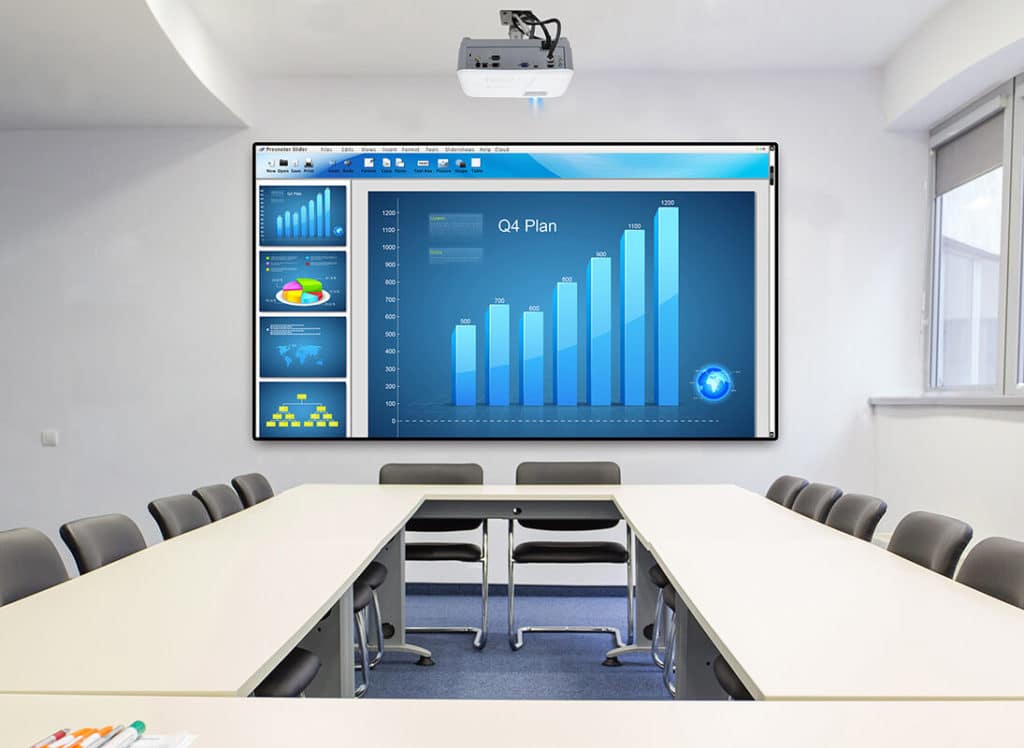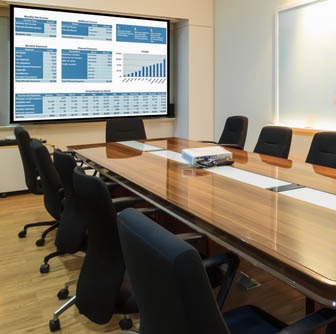An office projector is a device used to project images or video onto a surface, usually a wall or screen. Projectors are commonly used in business and education settings, as they allow for the display of large amounts of information in a clear and concise manner. There are many different types of projectors available on the market, from simple data projectors to more sophisticated multimedia units.
choosing the right projector for your needs is essential to getting the most out of this technology.
If you’re looking for a way to make presentations more engaging and interactive, using a office projector is a great solution. Here are some things to keep in mind when using a projector in your office:
1. Make sure the projector is placed at the correct height.
You don’t want your audience to have to strain their necks to see the screen.
2. The screen should be placed in a central location so that everyone in the room can see it clearly.
3. Use high-quality cables to connect your laptop or other device to the projector.
This will ensure that there’s no lag or interruption in the presentation.
4. If you’re using PowerPoint or another software program, practice beforehand so that you know how everything works and you can avoid any technical difficulties during the presentation.

Credit: www.viewsonic.com
Which is Best Projector for Office Use?
When it comes to finding the best projector for office use, there are a few things you’ll want to keep in mind. First, consider the size of your space and how much light is available. You’ll also want to think about the resolution you need and what features are most important to you.
If you have a small space or limited light, a pico projector might be a good option for you. These little projectors are incredibly portable and can even fit in your pocket. They’re perfect for giving presentations on the go.
If you need a higher resolution for things like video conferencing, then you’ll want to look at mid-range or high-end projectors. These will give you crystal clear images and plenty of features to play with. Just make sure you have enough light in your room to get a good picture.
Some other things to keep in mind when choosing an office projector include: ease of use, price, warranty, and customer support. Once you’ve considered all of these factors, you should be able to find the perfect projector for your needs!
How Much is an Office Projector?
An office projector can cost anywhere from a few hundred dollars to several thousand, depending on the features and quality you need. For example, a high-end 4K projector might cost around $4,000 while a more basic 1080p model might be closer to $1,000.
If you just need a projector for occasional presentations or meetings, a lower-priced model will probably suffice.
But if you’re using your projector on a daily basis for business purposes, it’s worth investing in a higher-quality option.
What is a Projector Used for in an Office?
A projector is a device that projects an image onto a surface, usually a wall or screen. Projectors are commonly used in offices for presentations and meetings. They can also be used for educational purposes, such as in classrooms and lecture halls.
Projectors typically use either an LCD (liquid crystal display) or DLP (digital light processing) chip to create the image.
What is Better a Projector Or Led?
There are a few things to take into account when deciding whether a projector or an LED display is better for you. It depends on the size of the room, the level of ambient light and your budget.
Projectors create images by shining a light through a small lens onto a screen.
The bigger the screen, the dimmer the image will be. This is why projectors are best used in dark rooms. If there is any ambient light, it will wash out the image.
LED displays use tiny light emitting diodes to create an image. They are very bright and can be seen even in rooms with lots of ambient light. However, they are more expensive than projectors and their resolution is not as good.
So, if you have a large room and want to watch movies or TV shows in it, then a projector is better for you. If you want to play video games or use your computer with an external monitor in a bright room, then an LED display is better for you.
The 5 Best Projector for Business (Presentations)
Office Projector Screen
An office projector screen is a necessity for any business that wants to make presentations to clients or employees. It allows you to project your PowerPoint slides or other computer-generated images onto a large screen, making it easier for everyone in the room to see.
There are many different types of office projector screens on the market, so it’s important to choose one that will best fit your needs.
You’ll want to consider the size of the screen, the type of material it’s made from, and how easy it is to set up and take down.
The size of the screen is one of the most important factors to consider when choosing an office projector screen. You’ll need to decide how big of a screen you need based on the size of your room and how many people will be viewing the presentation.
A smaller screen may be fine for a conference room with only a few people, but you’ll need a larger screen if you’re presenting to a group of 100 or more.
The type of material the screen is made from is also important. PVC screens are durable and inexpensive, but they can produce a glare that can be distracting.
Glass bead screens don’t have this problem, but they’re more expensive. Finally, there are rear projection screens that provide a clear image but require extra space behind them for projection equipment.
Once you’ve decided on the right size and material for your office projector screen, setting it up is easy.
Conclusion
An office projector is a device that projects an image or video onto a surface, usually a wall or screen. Projectors are commonly used in business settings for presentations and meetings. Many office projectors are portable, which makes them easy to transport and set up.
Some projectors can also be connected to laptops or computers, making them versatile tools for both work and play.
